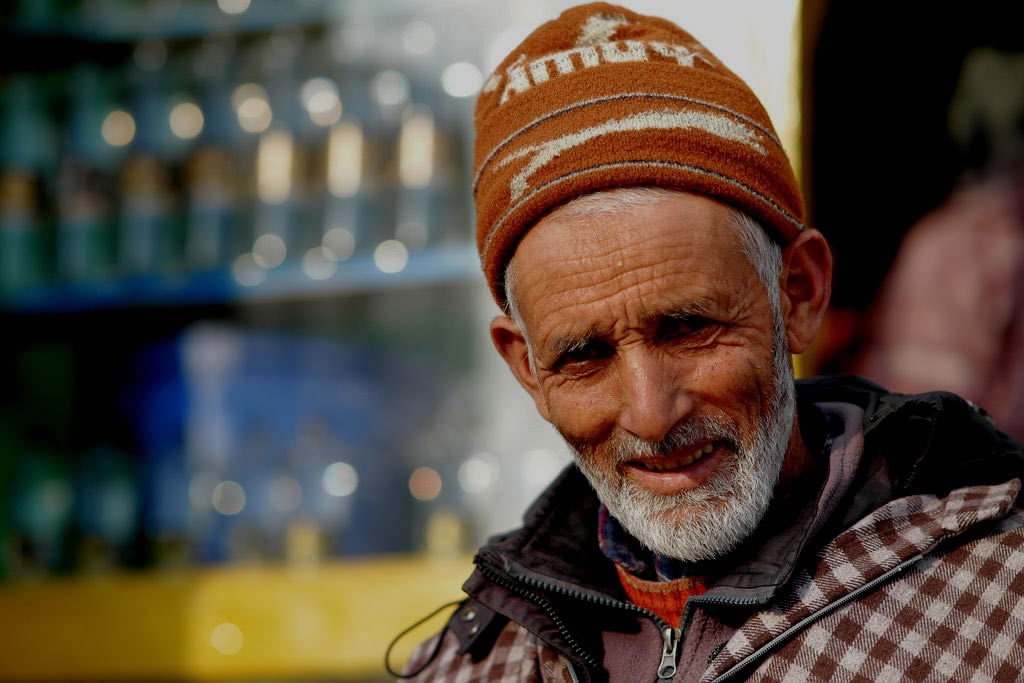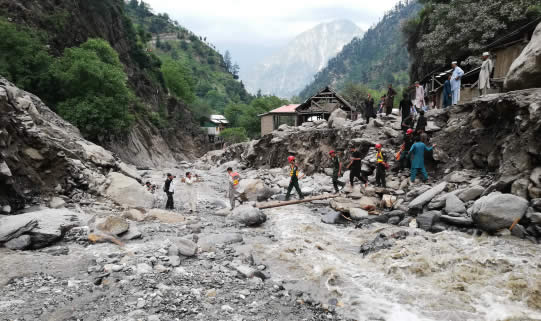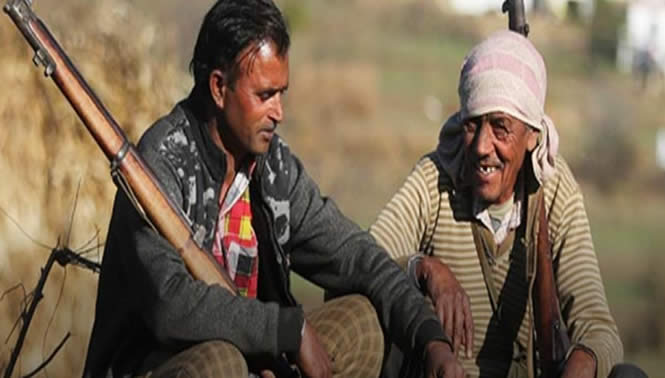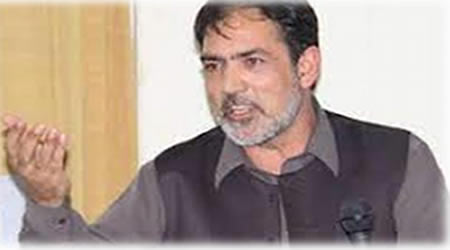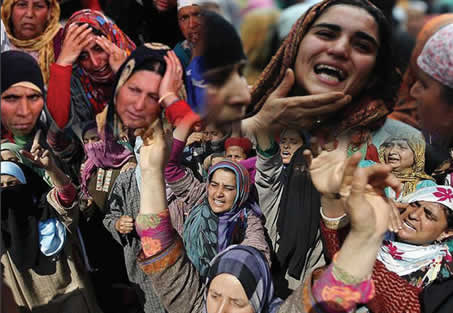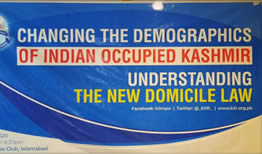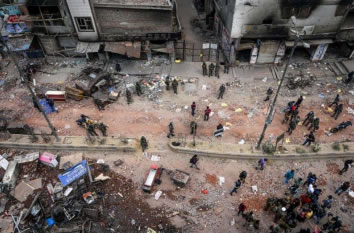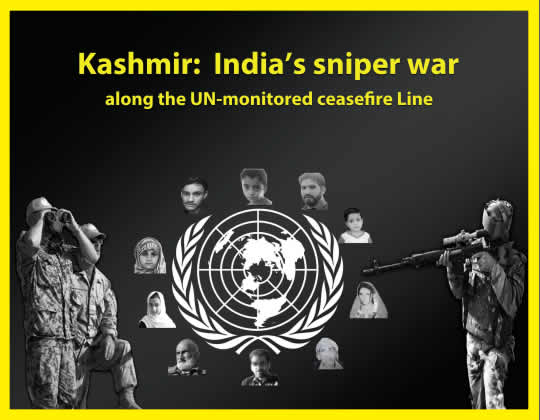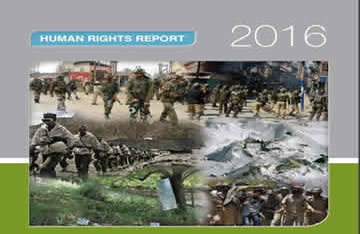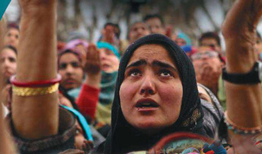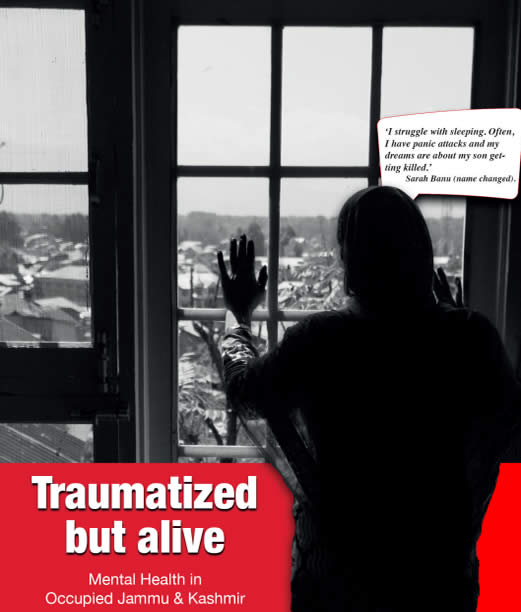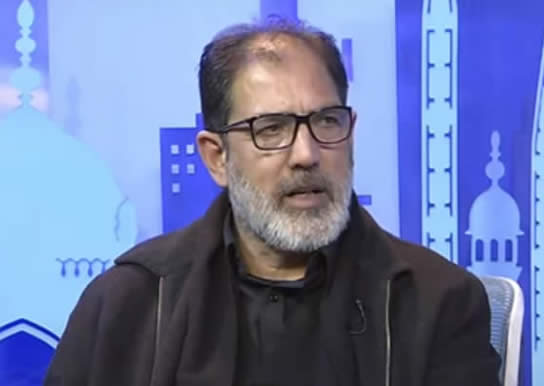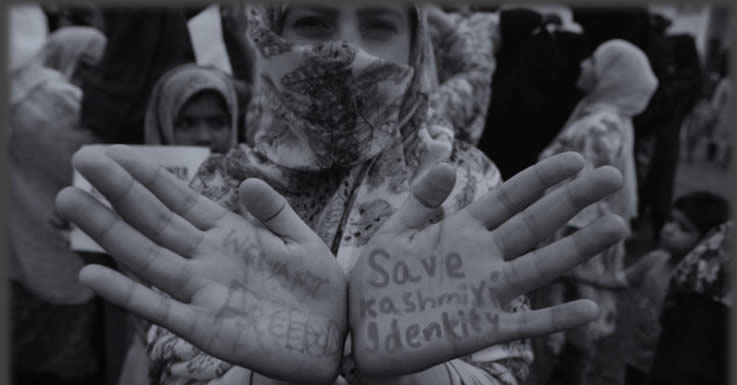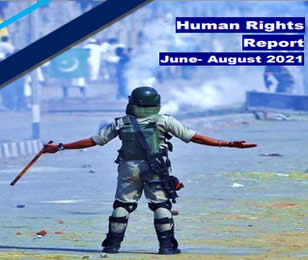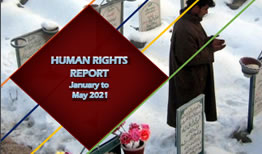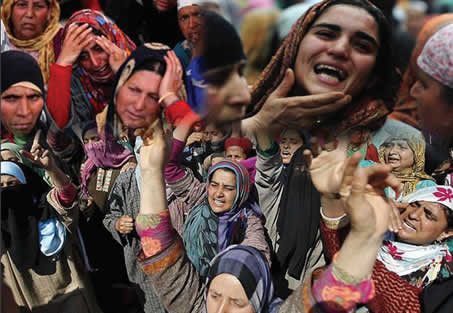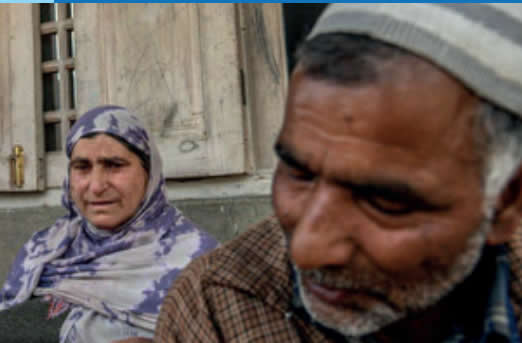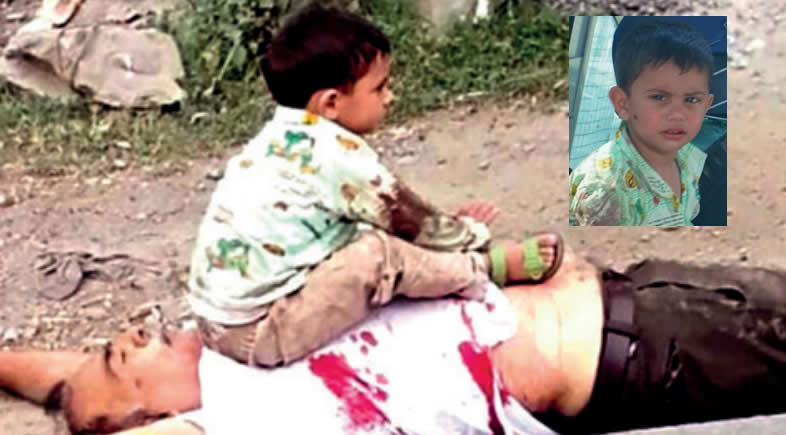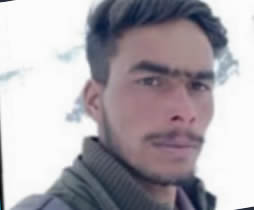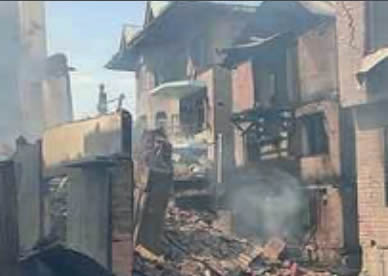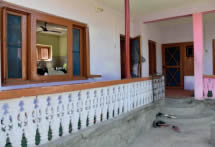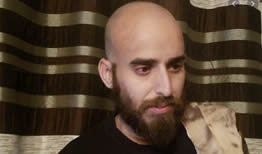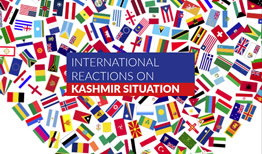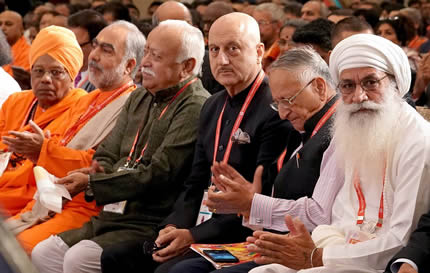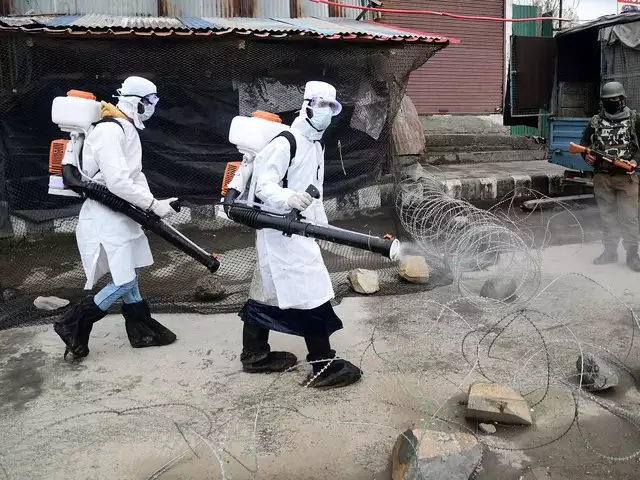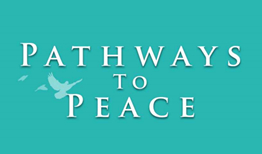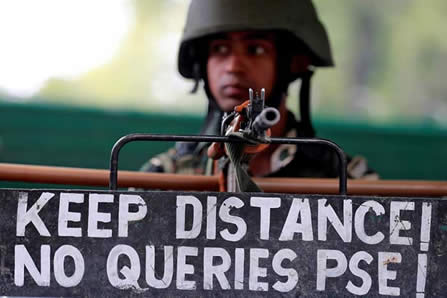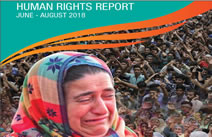COVID-19 in Kashmir
Introduction
Since the 1980s, India has implemented a colonial-style military occupation in Indian occupied Jammu and Kashmir (IOJK), marked by killings, threats, detentions, state terrorism, disappearances, etc. India has put the Kashmiris behind the iron curtain. In the wake of the Novel Coronavirus (2019-nCovid or COVID-19) pandemic, the Indian government protects the lives of people of IOJK by grossly inhuman behavior and directly attacking the residents already precariously living in IOJK. Moving around Kashmir is not easy due to a large number of military and police check posts and particularly in the complete absence of public transport. Internet blackout in the region is a blot on democracy. In a state where a doctor is unable to download a 25mb 2019-nCoV prevention guidelines for his patients, where a medical student is unable to open Google search results, where a journalist can’t send a news-story to his bureau, where a normal resident can’t upload a photo on social networking site, one should forget about the privilege to work from home. Modi has setback Kashmir for almost two decades. On the other hand, racism in India, spreading as fast as the COVID-19, becomes an excuse for Indian nationalists to attack Muslims. As the world is focusing on fighting the COVID-19 pandemic, conversely, Muslims in India are facing the allegation of "the reason for spreading the virus”. Since 2016, the Hindu nationalist government led by Narendra Modi came to power in India, the 200 million Muslim-population has been systematically discriminated and this situation aggravated during the period of 2019-nCoV pandemic. The propaganda that the spread of the Pandemic in India began with a Tblighi Ijtemah (Religious gathering), in which Muslims took part, laid the foundation for a new wave of racist attacks in India. In India, the COVID-19 pandemic crop-up as a boon for the Modi government, taking advantage of the chaos caused by the virus, the Indian government consolidated powers that would have been impossible to imagine half a dozen years ago. The extremist groups of Hindu nationalists attacked mosques, hospitals denied to test & treat Muslims and now they are even subjected to boycotts. This testifies that hatred reached a trial by ordeal for Muslims.
Tectonic Shifts in Indian Occupied Jammu & Kashmir
The novel COVID-19 pandemic is not the first shock that the Kashmiris are facing nowadays. Kashmir has undergone countless shocks throughout its history. People have faced depressions, sufferings, miseries, traumas, terrorization, killings, detentions, humiliation, damages, destruction and dehumanization by Indian forces. There is no doubt in it that the pandemic is more likely to benefit the Modi government as they have successfully distracted the attention of local plus international media from many globally disliked decisions made by the Indian government. Before 2019-nCoV reached Kashmir, the valley was already facing lockdown for seven long months after the Modi government launched a controversial move to seize control of the Muslim-majority state Jammu and Kashmir (J&K) on 5th Aug. A harsher approach and increased repression imposed in Kashmir under Modi’s regime. Immediately, the central government put the region under brutal military pressure to thwart any opposition. As the unrest spread after 5th Aug in IOJK, India the greatest democracy in the world, blocked roads, closed schools, took up positions on roofs, cut off access to the Internet, mobile communications and landlines. Even the most conciliatory and collaborating political leaders have been placed under house arrest, one can only fear the worst for the rest of the population of the region. The worst part is that residents have no control over what is happening and what is not happening, which leads to panic. The people of Jammu and Kashmir are already facing a very stressful and repressive environment and now this 2019-nCoV has given another chance to Indian authorities to turn Kashmir into “Ghost Town”.
Ailing Medical Facilities in IOK
Indian Occupied Jammu & Kashmir reported the first confirmed case of 2019-nCoV on March 18, 2020. As of Sunday, May 3, 2020, there were 701 confirmed coronavirus cases in IOJK, with eight deaths.1 The hospitals in IOJK have already reported shortages of essential equipment for the treatment of 2019-nCoV patients, including ventilators for patients, Personal Protective Equipment (PPE) for medical staff, pharmacies run out of medicines and hospitals struggle to deal with the crisis. A local newspaper wrote that in Kashmir alone, which has a population of around 13.62 million, there are currently only 97 ventilators and almost all of them are already occupied by patients suffering from other illnesses. In South Kashmir, having a population of around 30 lakh (3,000,000), there are only two ventilators to fight the virus. A local newspaper quoted a doctor in one of the hospitals of Kashmir said: "Forget the ventilators, we do not even have masks for the medical staff. I wore this mask at 8:00 a.m. today and it is now 4:00 p.m. and I still wear the same.” Another doctor from Srinagar hospital said that "Paramedics working in intensive care units don’t even have N95 masks and hand sanitizers." In this situation, doctors are at high risk who are being directly exposed to the virus-infected patients. Two doctors from Srinagar have been put in quarantine after tested positive for 2019-nCoV. Doctors in IOJK are demanding higher authorities to provide appropriate and adequate personal protective equipment, particularly N95 masks, coated gowns PVC, protective glasses, and other equipment but all in vain. Therefore, 2019-nCoV has highlighted the fragile health system of Kashmir. A big problem facing the healthcare system is the lack of preparedness and capacity to tackle health emergencies. Reports from various parts of the region suggest that a major health crisis is unfolding and given the current environment of uncertainty & fear, people experience stress, panic & anxiety. All this indicates that Kashmir was not prepared for a pandemic than the other states of India.
Kashmiri Prisoners
The Public Safety Act (PSA) violates articles 7, 9, 10 and 11(1) of the Universal Declaration of Human Rights and Articles 9 and 14 of the ICCPR. More than 5000 people have been detained under (PSA) in the region by the Indian government since Aug 5.3 There are more than a hundred Kashmiri leaders, activists, journalists, civil society members and teachers among the detainees. The detentions were carried out in accordance with the law of PSA, which allows the Indian authorities to detain a person for up to two years without any trial. After making amendments in PSA law authorities lodged detainees out of state as there is no space left in Kashmir prisons. At least 1,249 innocent people including 34 children are detained without any charges. Avinash Kumar, the executive director of Amnesty International India, said such actions were “in absolute contravention” to international law.
This is the before 2019-nCoV situation however after a pandemic the situation is even more aggravated as prisoners are being released around the world to stem the virus infection, ironically, Indian authorities are detaining people in IOJK. In reality, the Indian government is using the 2019-nCoV to lock up people without providing them any necessary health protection. The senior Hurriyat leaders are still house arrested or lodged in jails outside the state. The many old caged/prisoners are facing health problems like diabetes, kidney-related issues, chronic pains and injuries during custodial torture. However, the fear of catastrophic conditions raises as the coronavirus reaches the detention centers. Access to medicine and healthcare is almost nonexistent. The 2019-nCoV is additional stress facing the prisoners and their families as if the virus ignites, it will be a disaster.
Journalism under Threat
A Kashmiri journalist who had returned to Delhi after spending two days in IOJK was asked about the situation of Kashmir. He responded with one word, “Falasteen (Palestine)” – a clear reference to the settler-colonialist occupation in IOJK. Since August 5, Indian security forces have cut off the Internet, mobile and landline telephone and blocked the roads in Kashmir which disrupted the communication system in IOK. Before 2019-nCoV few newspapers were allowed to get printed. The editor of Kashmir Times, one of the oldest newspapers in Kashmir, filed a complaint in the Supreme Court of India, claiming that restrictions on press are unconstitutional and violate freedom of speech. The work of independent journalists in the state is seriously hindered. Journalists are not allowed into the state; other media persons cannot get to the printing houses, which begin to run out of ink and paper.
Among other things, the police do not allow reporters to move freely within the state and to communicate with people on the streets. Kashmiri journalists do not have access to news feeds or social networks, they cannot check on the Internet that how things are going in other regions, and they cannot even make calls. You have to work in the old way with notebooks and pens. At night, many reporters sleep in the newsroom, because of the curfew, they can't go home. There are journalists who are working with international media and the slow speed of the internet made it even harder to do their job. In addition, on 20th April 2020, Masrat Zahra, a 26-year-old photojournalist from Srinagar, woke up to learn that she has been booked under the stringent Unlawful Activities (Prevention) Act (UAPA) for indulging in "anti-national activities" on social media.5 According to police Zahra’s photographs on her Facebook account “can provoke the public to disturb law and order” and “glorify anti-national activities and dent the image of law enforcement agencies”. Ms. Zahra claims that she posted her archival photos which she had already posted a few days back. She is not alone other renowned journalists like Qazi Shibli, Asif Sultan and Adil Farooq are also accused of tweeting and posting anti-national posts.
The Indian government has taken almost complete control over what information comes from the region. Earlier Indian authorities called communication restrictions necessary to prevent unrest in the region and now they blocked all the means of communication in the name of 2019-nCoV pandemic. Kashmir residents mostly rely on TV news and radio alerts to get informed & updated about the pandemic, but TV channels report news about politics and politicians.
Limping Internet
In situations of conflict or pandemic, there is always a high need for information, however, people of Indian occupied Jammu & Kashmir have spent more than half a year without internet access. Since 2012, India has blocked 385 times the internet in IOJK.6 David Kaye, the U.N. special rapporteur on freedom of expression called the blockage “draconian” and “worse than collective punishment.” According to the Software Freedom Law Center, it accounts for more than 60 percent of the blackouts in the country. On January 10, the Supreme Court of the country declared the Internet blackout as unconstitutional and illegal. The authorities executed the judgment in a peculiar way and in the last week of January, access to the 2G low-speed network appeared in the region, while all social networks remained blocked, access was open only to a limited list of allowed sites. Even after the outbreak of a pandemic, the situation remained the same.
People cannot get updated information regarding pandemic even doctors are unable to get online guidelines proposed by doctors from other countries. Due to slow internet speed, doctors cannot download the COVID-19 prevention manual of just 25mb. The Internet is terribly slow, sites with text loading take several minutes to open. A regular Facebook picture takes at least five minutes to upload.
People are scared, confused and now frustrated by the sudden turn of events. They were already in isolation but due to 2019-nCoV fuss, they are worried about their loved one's health who are living outside Jammu & Kashmir. The slow speed of the internet has handicapped people. They neither have access to the internet nor to any newspaper, they need news.
Educational Disruption amid Lockdowns
Wasted time can never be regained. This is the story of every student and scholar of Kashmir. The studies are standstill for consecutive three breaks, Aug crackdown, winter break and pandemic lockdown. In IOJK, schools and universities had to reschedule their academic calendars due to an abrupt lockdown for seven months by the Modi government. The icing on the top for the Indian government is Covid-19 as authorities are using pandemic to impose strict crackdown in IOJK. The students are confined inside their houses for more than 7 months. After losing much time due to more than a half year’s clampdown when the educational institutes had just reopened the classes in the month of Feb 2020, there was this pandemic outbreak in March and once again educational institutes are off since then.
Amidst virus lockdown, the absence of high-speed internet makes it impossible for students to take classes online or download reading material. The MPhil and Ph.D. scholars don’t have access to the internet and online libraries or e-notes. If this situation continues for one more month it would cost the whole academic year of the students and they have to pursue the same degree next semester too. Access to the internet is not a privilege, it is a necessity, but the authority’s denial to restore 4G internet services in J&K causes a huge loss and mental disturbance of students and if this is jinxed then students have to face it till May 17th.
The Economy in Tailspin
The world is facing socio-economic problems due to COVD-19 pandemic while Kashmir has been facing it since 5th Aug, 19. Public transport is inaccessible in many areas and most businesses are closed due to constant lockdown in the region. In addition, there is a shortage of skilled labor, since about 400,000 people left the state in search of a better earning in the beginning of the lockdown. This aggravated situation has led to the loss of thousands of jobs. Laborers and daily wage workers, who have lost their work due to lockdown, are waiting for a financial assistance package.
The streets are deserted in J&K, there is no tourist in the town, the tourism business which served up to 700,000 people a year, simply ceased to exist.7 There are about 3,000 hotels in IOJK, and all of them are vacant. The owners have business-loans that need to be paid and daily expenses can also be not ignored. The industries were just reopened after the 7 months long lockdown than covid-19 gave an excuse to Indian authorities to impose even stricter lockdown. The lack of Internet has led to the loss of more than 5,000 travel agents jobs.
The Venice of the East, 1,000 iconic floating houses of Srinagar, also remained empty. For many residents, it is the only source of livelihood and each houseboat needs maintenance up to $ 7,000 a year. It was not only tourism and related sectors of the economy that suffered heavy losses. The carpet handicraft industry has also been affected, Kashmir is a prime exporter of carpets but the internet shut down has caused communication problems between manufacturers and importers & due to lockdown this industry has lost more than 50,000 jobs.
The surprising move of a clampdown by Modi during the harvest season in IOJK affected the fruit industry. The apple industry also suffered and plunged into the turmoil as the blocked transport links cut-off the communication between buyers and traders.
The locally-produced apples rot on the branches in orchards. Shops and cold stores remained closed amid lockdown. Apples make up 12-15% of the economy of Jammu and Kashmir, but due to the current situation of pandemic-lockdown more than half of this year's harvest will never be harvested. If the situation is not resolved by the end of the year, the consequences for Kashmiri gardening may be irreversible.
Poor are doomed in IOJK. People have no means of survival without going out, the daily food of poor people depends on their work in sweatshops, small jobs that they do here and there. No provision is made to ensure the payment or compensation of small workers during the lockdown period when several dozens of daily wage laborers/workers are forced to stay at home without having the means to meet their daily subsistence needs. Pandemic has increased brutalities of the fascist state of India in IOJK. How could daily wage labor work from home? How would they survive in these circumstances? Moreover, access to information is necessary to deal with the Coronavirus pandemic (COVID-19) and in Kashmir where more than 2,000 people have been quarantined the lack of high-speed Internet access makes things worse. The negligence of the Modi government towards Kashmiris is nothing more than a genocidal act.
Modi’s Response towards the Novel COVID-19 Pandemic
After China and Europe, now India is facing a surge in the number of novel COVID-19 pandemic cases. The extreme density of the Indian population and the government’s inability to tackle the 2019-nCoV pandemic make fear the worst for the coming weeks. In an attempt to stem the Covid- 19 pandemic, on 24th March, Narendra Modi with his folded hands announced the first lockdown of the country for 21 days without saying how to gain access to food & medicine and without organizing the supply chains of essential services during this period. Modi’s double-quick & consecutive third lockdown can outburst the coronavirus in India. After having no 2019-nCoV case until early March, India has now entered the exponential phase of the pandemic in recent days. By the morning of 3rd May, the country already counted 40,263 cases and 1,306 deaths. The country is not well-equipped in the health sector moreover, the social and economic tensions across the country are likely to settle nothing. Ramanan Laxminarayan, director of the Center for Disease Dynamics, Economics & Policy (CDDEP) has already warned authorities on March 19 that if this situation persists India has to prepare for a “tsunami” of 2019-nCoV cases and the death toll can be reached at 30,000 by the end of May.8 India has only 0.7 hospital beds per 1,000 people according to Organization for Economic Co-operation and Development (OECD) data.9 Indian states, such as Uttar Pradesh, have both a very dense population and poor health facilities. The health system in India is largely made up of private clinics and those clinics are working only in urban areas. In addition, 70% of the population lives in rural areas with little or no health facilities and most of them don’t have health insurance. It is feared that many patients will stay at home to avoid costs as the medical equipment, disinfectants, masks and medicines have considerably increased the cost of access and pushed the poorest out of care. The Indian writer Arundhati Roy has described this lockdown as world’s biggest, most punitive lockdown.
India: An Undemocratic Democracy
According to an Indian media, the patient who died in Mumbai on April 3 was a Muslim. He had traveled to Delhi a few weeks before his illness to take part in a local Tablighi Jamaat Ijtemah (Muslim religious gathering), more than 1,800 people participated in the Ijtemah. In response, New Delhi quickly took measures to close the religious places of the Muslims and soon after these catchphrases such as "Muslims spreading the new Coronavirus" & "Indian-Muslims launching the new Corona Jihad" became popular in India in early April. This well-targeted public opinion war reminds us of the disturbance and riots caused by the "Citizenship Amendment Act" (CAA) throughout India from Dec19 to date. The turmoil against Muslims in India has caused people from strata of society in the country to have a feeling of hatred against Muslims from the perspective of 2019-nCoV pandemic prevention. Many Hindu groups demanded that the authorities should ban Muslim’s religious activities and seize the bank accounts of the Muslim Missionary Society.
The 2019-nCoV pandemic overshadowed the immoral amendments to the citizenship law that the Indian authorities passed in December 2019. The government justified the bill by saying that they intend to preserve linguistic, cultural and social identity in northeast India. This took public to the streets. The clashes ended in pogroms of Muslims in different areas of India and consequently, about 50 people died, and the wounded were in the hundreds.
The international media has condemned Modi and his party, Bharatiya Janata Party (BJP), for the undemocratic steps taken by the democratic country. All these events have destabilized the Indian economy even before the pandemic. Unemployment rose to 7-8%. The Bureau of Statistics of India and the World Bank expected that till the end of 2020 the growth of the Indian economy will slow down to 5%.
In India, the right-wing government has left hundreds of thousands of migrant workers stranded without work or transport to their villages and towns of origin. The Dalits (formerly known as "untouchables") in Mumbai are asked to clean the trash bins in the homes where coronavirus patients live. Sadly, the people of north-east India are already victims of discrimination in normal times, but as they are close to China they are also accused of being responsible for the influx of the virus. In Uttar Pradesh, the federal state of more than 200 million inhabitants with a large Muslim minority, led by one of the most radical yogis of the BJP, police ordered Muslims to return to Pakistan.
Amid the pandemic, some nationalist politicians stepped up with their anti-Muslim rhetoric, Raj Thackeray, leader of the Maharashtra Navnirman Sen, stated that “members of the Tablighi Jammat should be shot.” The hashtag “coronajihad, CoronaTerrorism & SuperSpreaders" are using on Twitter and many handlers calling Muslims "ignorant" & "carriers of corona infection". Recently a BJP leader calls for boycott Muslims and not to buy anything from them.
Quarantine: Expectations vs. Reality
Before the pandemic, India was already facing many tensions due to discriminatory policies of the authoritarian Hindu nationalist government against minorities living in India. Narendra Modi’s bigoted policy against Muslims & communal hatred resulted in deadly riots. In New Delhi, Hindu nationalists accused Muslim traders of spreading the virus and attacked them with cricket bats. Many Muslims across the country say that they are not allowed in pharmacies, shops. Some hospitals in the state of Telangana refused to treat Muslims, hostility against them is increasing day by day. On the other hand, the closure of temples, mosques and gurdwaras has additionally hit the poor and homeless, who found shelter and food in the temples, gurdwaras and mosques.
For small vendors, drivers, hawkers and craftsmen, who see their business reduced to nothing overnight, telework or telecommuting makes no sense. Now the question is how long would they survive before they resume their work? In Uttar Pradesh, migrant laborers were sprayed with chemical solution upon their entry to Bareilly in order to contain the virus. The Internet has been flooded with videos in which police are toppling fruit and vegetable stalls on the street. The vegetable and fruit merchants have been arrested in many places. The medical personnel and journalists who were allowed to continue their jobs during the quarantine period fell also into the hands of the police.
India has a fragile health system even in normal times and if pandemic sustains, then in a few months, a disaster may break out in the country. India has only 0.7 beds per 1,000 people, ranking 177th among 217 countries in the world.13 The chaotic urbanization has made India not only the most polluted but also the densest in the world. 85 % of Indians do not have a single room, in Bombay, 50 % of the population lives in slums, where there are four people living in a single room. The financial capital concentrates up to 200,000 inhabitants per square kilometer in certain slums. Suffice it to say that "social distancing" is nearly impossible in these areas. Recently, the members of the Indian Parliament said that the coronavirus will never go to rural areas of India because there are many herbal remedies to kill the virus and called for protective measures to be taken only in urban areas.
Now, in a situation where people need to trust their government to be able to influence the crisis of the virus, people are clearly not doing it and rightfully so. For almost four weeks now, tension has been escalating every day. The unfounded rumors, drinking cow urine as protection against the virus, chicken meat containing the virus, and the hazard or spending fifteen minutes in the sun each day, do not suggest anything good. Meanwhile, Indian Prime Minister Narendra Modi called for a partial curfew and urged the Indians to applaud and knock pans in public as if it would scare the virus away. In fact, supporters of his right-wing party have circulated messages claiming that the virus would be killed by noise. This is unfortunately not an antidote to anxiety caused by COVID-19 pandemic.
Conclusion
Amid the period of a pandemic, the Indian government began to take measures against the demographic composition of Jammu and Kashmir which has caused fear among the residents of IOJK. The Citizenship Amendment Act (CAA) breaks the principles of secularism & equality and shows a malevolent attitude of Modi towards other religious communities. By denying nationality to Muslim refugees, Prime Minister Modi is actually targeting Indian Muslims whom he wants to make stateless. The Indian government is officially creating a Hindu nation-state by granting nationality on religious grounds. Recently, on 31st March India imposed domicile law in the IOJK to reduce the Muslim population in their own homeland by giving residence, jobs and land to Hindus from all over India. The message delivered to Muslims is clear “Don’t resist and accept the new India. In return, you can live relatively peacefully, but on our terms”. The ordinary Indian Muslims who are scattered all over India and living quite urbanely can’t say “No” to Modi as Modi’s horrible impression of suppressing the Muslims when he was the minister of Gujarat is enough for ordinary people to choose to protect themselves. Within a month, we have learned that the virus is not as serious as we thought. And if it's a war, it's a communal war, it's an ethnic war, it’s a religious war, it’s a war against Muslims.
Bibliography
“Do not buy from Muslims': BJP leader in India calls for boycott.”
Aljazeera. April 29, 2020. accessed on May 2, 2020,
“End Internet Shutdowns to Manage 2019-NCOV, Blocking Access Could Cost Lives.”
Human Rights Watch. March 31, 2020. accessed on April 30,2020,
https://www.hrw.org/news/2020/03/31/end-internet-shutdowns-manage-2019-nCoV
Ganguly, Sanjay. 'India must prepare for a tsunami of coronavirus cases.” BBC News.
March 19, 2020. accessed on May 3, 2020,
Gettleman, Jaffrey. “India Revokes Kashmir’s Special Status, Raising Fears of Unrest.”
The New York Times. Aug 5, 2019. accessed on May 2, 2020,
https://www.nytimes.com/2019/08/05/world/asia/india-pakistan-kashmir-jammu.html
“Growth in India projected to 'decelerate' to 5% in 2019-2020: World Bank.”
The Economic Times. Jan 29, 2020. accessed on May 3, 2020,
“Health equipment - Hospital beds.” OECD Data. accessed on May 3,2020,
https://data.oecd.org/healtheqt/hospital-beds.htm
“India Covid 19 Response: Government Must Refrain From Abuse Of Power And Immediately Release All Arbitrarily Detained In J&K.” Amnesty International India.
March 31, 2020. accessed on May 2, 2020,
“Kashmir Conflict: Woes Deepen As Lockdown Stifles Economy.”
BBC News. Oct 8,2019. accessed on May 2, 2020,
https://www.bbc.com/news/world-asia-india-49956960\
Mir, Hilal. “Death of Kashmiri leader in jail spread worries Relatives in Kashmir unable to meet prisoners lodged in far off jails in India for want of travel expenses, communication.”
Anadolu Agency. Dec 27, 2019. accesses on May 3, 2020,
https://www.aa.com.tr/en/asia-pacific/death-of-kashmiri-leader-in-jail-spreadworries/1685203
Naqash, Rayyan. “Intimidation is in the air’: How the Indian state is suffocating Kashmir’s journalists.”
News Laundry. April 24, 2020. accessed on April 30, 2020,
Roy, Arundhati., “Arundhati Roy: ‘The pandemic is a portal.”
Financial Times. May, 2020. accessed on May 3, 2020,
https://www.ft.com/content/10d8f5e8-74eb-11ea-95fe-fcd274e920ca
Sidiq, Nusrat. “Jammu and Kashmir: COVID-19 cases cross 700 mark.” Anadolu Agency.
May 3, 2020. accessed on May 3, 2020,
https://www.aa.com.tr/en/asia-pacific/jammu-and-kashmir-covid-19-cases-cross-700-
mark/1827503
Author can be reached at mehr@kiir.org.pk.
All views discussed in this research are author’s own and don’t represent the opinions of KIIR.
Related Reports
